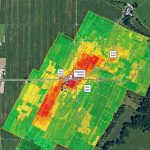Pesticide Rotation: A Must for Effective Pest Management
Farmers widely use pesticides for controlling pest populations and diseases in agricultural production systems. However, resistance to pesticides is a significant problem in agriculture, resulting in lower crop yields and increased pesticide use, which can have negative environmental and health impacts.
Pesticide rotation is a management strategy that aims to reduce the risk of pesticide resistance. It is implemented by alternating the use of different chemical compounds with different modes of action.
Pesticide Resistance
Pesticide resistance is the ability of pests to survive exposure to pesticides that would usually kill them. Resistance occurs when a small percentage of pests have a genetic mutation that allows them to survive exposure to a pesticide. Resistance can occur in various pests, including insects, weeds, and fungi. When pests, pathogens or weeds develop resistance to a pesticide or herbicide, they can reproduce, passing on the resistance trait to their offspring or spores, resulting in a population of resistant organisms that can cause significant damage to crops.
Rotating Pesticides
Pesticide rotation involves the use of a management strategy that involves alternating the use of different chemical compounds with different modes of action to control pests (insect pests, diseases, and weeds). The goal of pesticide rotation is to prevent pests from developing resistance to a particular pesticide by exposing them to different mechanisms of action.
Pesticide rotation has several advantages:
One of the advantages of pesticide rotation is that it can help to maintain the effectiveness of pesticides over the long term. When a single pesticide is used repeatedly, pests can quickly develop resistance to it, rendering the pesticide ineffective. Rotating between different groups of pesticides with different modes of action can reduce the likelihood of pests developing resistance, as they won’t be exposed to the same chemical for an extended period of time. As a result, farmers can continue to use pesticides effectively over the long term, without having to constantly switch to new chemicals or risk the emergence of resistant pest populations.
Another advantage of pesticide rotation is that it can reduce the amount of pesticide used, resulting in lower costs for farmers and reduced environmental and health impacts. By rotating between different groups of pesticides, farmers can target specific pests or diseases with the most effective chemical, rather than relying on a single pesticide for all applications. This targeted approach can reduce the overall amount of pesticide needed, which can save farmers money and reduce the environmental and health impacts associated with excessive pesticide use.
In addition to these benefits, pesticide rotation can also prevent the development of resistance in pests, leading to more sustainable pest management practices. When pesticides are used repeatedly, pests can quickly develop resistance, making it difficult to control their populations. However, by rotating between different groups of pesticides, pests are less likely to develop resistance, as they will not be exposed to the same chemical for an extended period of time. This can help to maintain the efficacy of pesticides, reduce the risk of pest outbreaks, and promote more sustainable pest management practices in agriculture.
https://www.drugwatch.com/paraquat/
https://www.drugwatch.com/roundup/glyphosate/
Modes of Action
Modes of action refer to the mechanism by which a pesticide controls pests. Different modes of action target different aspects of a pest’s biology or physiology. For example, insecticides may work by interfering with nerve impulses, disrupting the pest’s metabolism, or interfering with its ability to molt or reproduce. Fungicides may work by disrupting cell membranes or interfering with fungal enzymes. Herbicides may work by inhibiting photosynthesis, disrupting cell growth, or interfering with protein synthesis. Rotating pesticides with different modes of action is an effective way to control pests while minimizing the risk of resistance.
IRAC, FRAC, and HRAC are organizations that classify pesticides based on their mode of action.
Some examples of IRAC (Insecticide Resistance Action Committee) classes include:
Group 1: Acetylcholinesterase inhibitors (carbamates and organophosphates). These include active ingredients such as Carbabyl, Carbofuran, Pirimicarb, Malathion, and others.
Group 3: Sodium channel modulators, such as Pyrethroids. They include active ingredients such as Bifenthrin, Deltamethrin and Cypermethrin.
The full IRAC classification is available here.
The FRAC classification is available here.
Implementing Pesticide Rotation
Farmers have to take a number of specific actions in order to implementing effectively implement pesticide rotation:
- Identify the pests and diseases present in the field: Before implementing pesticide rotation, farmers need to identify the pests and diseases present in their fields. This can be done through regular monitoring and scouting, as well as laboratory analysis of plant samples.
- Select appropriate pesticides: Once the pests and diseases have been identified, farmers need to select appropriate pesticides for rotation. This involves considering the mode of action of each pesticide and selecting chemicals from different groups to avoid using the same chemical for an extended period of time.
- Develop a rotation schedule. Farmers should develop a rotation schedule that specifies the order in which different pesticides will be used throughout the growing season. The schedule should take into account the timing of pest outbreaks and the efficacy of each pesticide.
- Follow label instructions: Farmers should follow the label instructions for each pesticide used in the rotation, including the recommended dosage, application method, and timing.
- Document pesticide use: Farmers should keep detailed records of the pesticides used, including the date of application, dosage, and location. This information can be used to evaluate the effectiveness of the rotation schedule and to comply with regulations regarding pesticide use.
- Regularly assess pest populations: Farmers should regularly assess pest populations to determine the effectiveness of the rotation schedule. If pests are still present, farmers may need to adjust the rotation schedule or consider alternative pest management strategies.
By taking these actions, farmers can effectively implement pesticide rotation and reduce the risk of resistance in pest populations. However, it is important to note that pesticide rotation should be just one component of a comprehensive pest management plan, which may also include cultural practices, biological controls, and other strategies to minimize pest damage and promote plant health.
Challenges of Pesticide Rotation
Despite the benefits of pesticide rotation, implementing this strategy can be challenging. For instance, farmers may have to invest in more expensive pesticides or switch to different pesticides, which can increase their production costs. There is also the possibility of crop damage or yield reduction if the selected pesticides are not effective against the pests present. Farmers may also need to develop new management strategies or adjust their current strategies to account for changes in the pest population and their environment.
Many countries, mainly in the EU, have banned different pesticides due to their harmful effects on the environment and human health. This ban makes it more challenging for farmers to rotate pesticide groups effectively. The limited number of available pesticides can make it difficult to find chemical compounds with different modes of action to control pests effectively.
This situation can lead to an over-reliance on a limited set of chemicals, increasing the risk of pesticide resistance. In such cases, farmers may need to explore alternative pest management strategies, such as biological control, crop rotation, and the use of resistant crop varieties, to manage pest populations effectively.
Conclusion
In conclusion, pesticide rotation is a sustainable approach to pest management that can help farmers produce healthier crops and reduce the risk of pesticide resistance, while protecting the environment.
By selecting pesticides carefully, using with different modes of action and monitoring pest populations regularly, farmers can maintain the effectiveness of pesticides over the long term, reduce costs, and minimize negative environmental and health impacts.
Looking for a comprehensive solution for pest and disease management?
yieldsApp is an AI-based software platform that can help you achieve your pest management goals. With yieldsApp, you can identify and monitor pests and diseases, select appropriate pesticides for rotation, develop a rotation schedule, follow label instructions, and document pesticide use – all in one easy-to-use platform.
yieldsApp provides you with the tools you need to stay on top of your pest management practices, with features that include real-time alerts for pest and disease outbreaks, predictive analytics to help you plan your rotation schedule, and a dashboard that lets you track your progress and results over time.
With yieldsApp, you can reduce the risk of resistance in pest populations, save money on pesticides, and minimize the environmental and health impacts of pest management practices.
Learn more at https://yieldsapp.com







